Never Say Never Again
6 /10 1 Votes
60% Rotten Tomatoes Genre Action, Adventure, Thriller Featured song Never Say Never Again Duration Language English | 6.2/10 IMDb Screenplay Lorenzo Semple, Jr. Country United KingdomUnited States | |||||||||||||||||||||||||||||||||
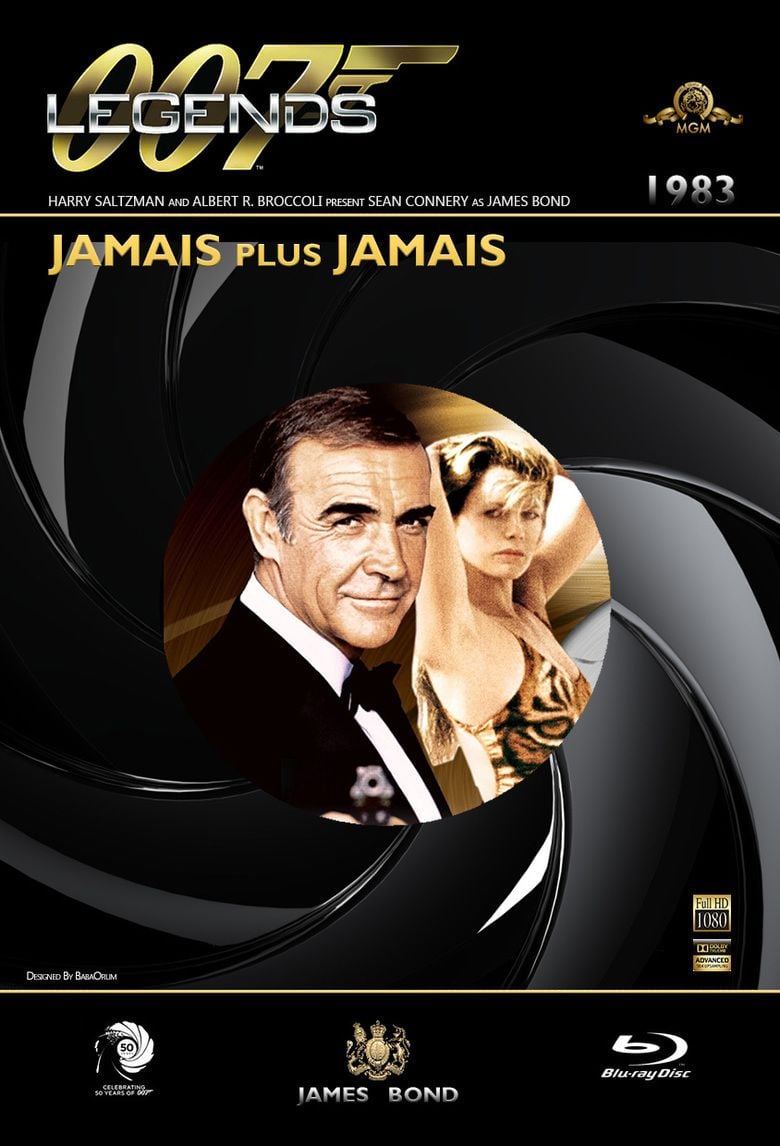 | ||||||||||||||||||||||||||||||||||
Release date 7 October 1983 (1983-10-07) Writer Kevin McClory (based on an original story by), Jack Whittingham (based on an original story by), Ian Fleming (based on an original story by), Lorenzo Semple Jr. (screenplay) Initial release October 6, 1983 (Los Angeles) Cast (James Bond), (Domino Petachi), (Maximilian Largo), (Fatima Blush), (Ernst Stavro Blofeld), (Felix Leiter) Similar movies , For Your Eyes Only , On Her Majesty's Secret Service , The Abyss , A View to a Kill , Tagline Sean Connery is James Bond 007 | ||||||||||||||||||||||||||||||||||
Never say never again intro hd 720p 1983
Never Say Never Again is a 1983 James Bond spy film starring Sean Connery, directed by Irvin Kershner, produced by Jack Schwartzman, and written by Lorenzo Semple Jr. with uncredited additional co-writers Dick Clement and Ian La Frenais, from a story by Kevin McClory, Jack Whittingham, and Ian Fleming. It is the second adaptation of Fleming's Thunderball, which was previously adapted as the 1965 film of the same name. Unlike the majority of James Bond films, Never Say Never Again was not produced by Eon Productions, but by an independent production company, one of whose members was Kevin McClory, one of the original writers of the Thunderball story, who retained the filming rights of the novel following a legal dispute over them.
Contents
- Never say never again intro hd 720p 1983
- James bond never say never again 1 of 15 avi
- Plot
- Cast
- Production
- Cast and crew
- Filming
- Music
- Release and reception
- Contemporary reviews
- Reflective reviews
- Legacy
- References
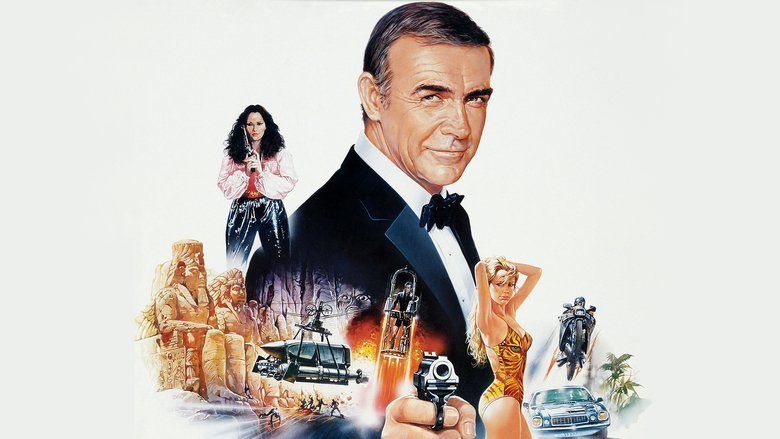
Connery played the role of James Bond for the seventh and final time, marking his return to the character 12 years after Diamonds Are Forever. The film's title is a reference to Connery's reported declaration in 1971 that he would "never again" play that role. As Connery was 52 at the time of filming, the storyline features an aging Bond, who is brought back into action to investigate the theft of two nuclear weapons by SPECTRE. Filming locations included France, Spain, the Bahamas and Elstree Studios in England.
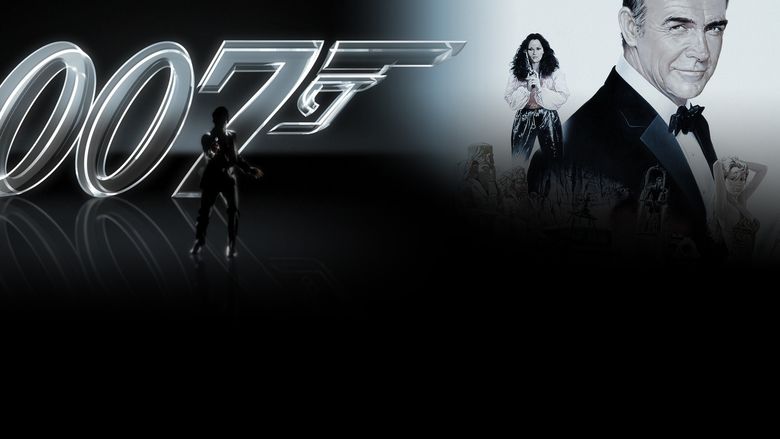
Never Say Never Again was released by Warner Bros. in October 1983, opening to positive reviews and was a commercial success, grossing $160 million at the box office, although less overall than the Eon-produced Octopussy released in the same year. Metro-Goldwyn-Mayer, to date, owns the distribution rights and also distributes Eon's Bond films, and the company has handled subsequent home video releases of the film.

James bond never say never again 1 of 15 avi
Plot
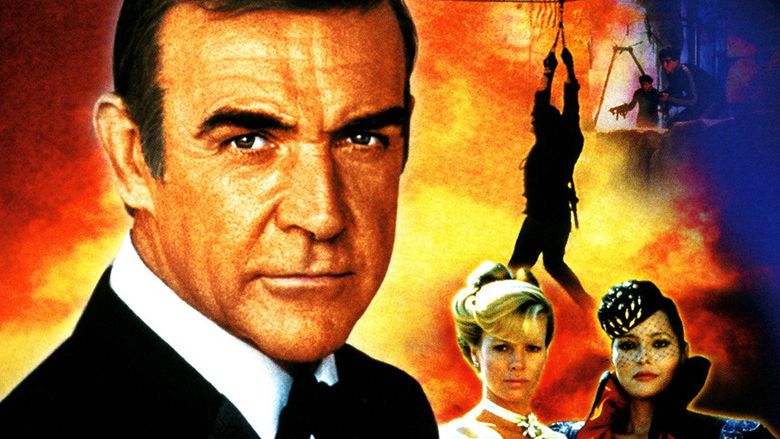
After MI6 agent James Bond, 007, fails a routine training exercise, his superior, M, orders Bond to a health clinic outside London to get back into shape. While there, Bond witnesses a mysterious nurse named Fatima Blush giving a sadomasochistic beating to a patient in a nearby room. The man's face is bandaged and after Blush finishes her beating, Bond sees the patient using a machine which scans his eye. Bond is seen by Blush, who then attempts to kill him in the clinic gym, but Bond manages to defeat the assassin.
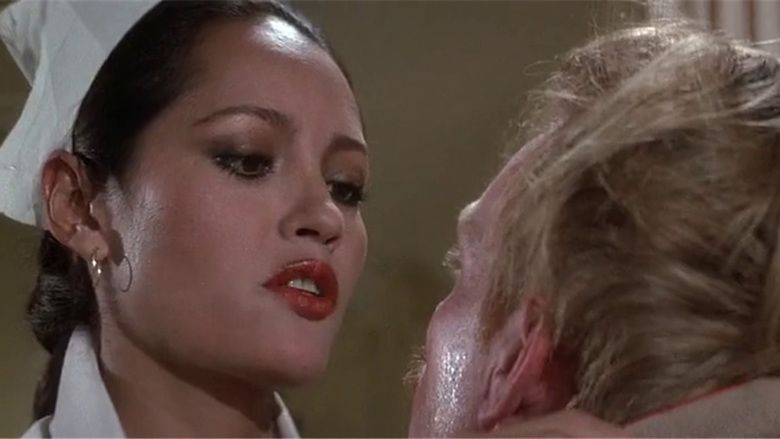
Blush and her charge, a United States Air Force pilot named Jack Petachi, are operatives of SPECTRE, a criminal organisation run by Ernst Stavro Blofeld. Petachi has undergone an operation on his right eye to make it match the retinal pattern of the US President, which he uses to circumvent iris recognition security at the fictitious RAF Station Swadley, an American military base in England. While doing so, he replaces the dummy warheads of two cruise missiles with live nuclear warheads; SPECTRE then steals the warheads, intending to extort billions of dollars from NATO governments. Blush murders Petachi to cover SPECTRE's tracks.
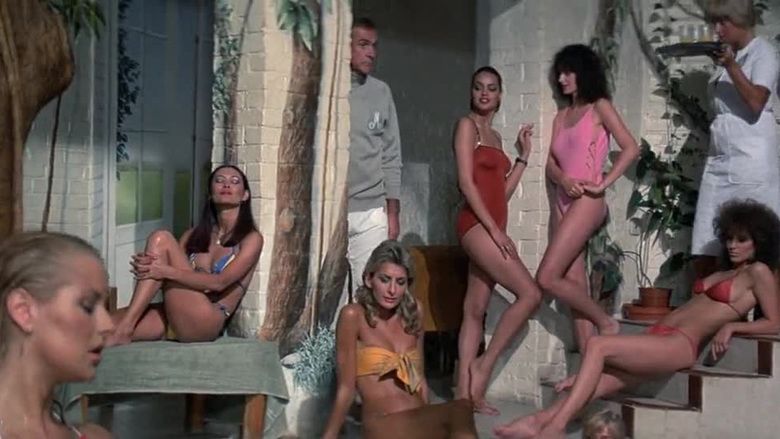
Under orders from the Prime Minister, M reluctantly reactivates the double-0 section and Bond is assigned the task of tracking down the missing weapons. He meets Domino Petachi, the pilot's sister, and her wealthy lover, Maximillian Largo, a SPECTRE agent. Bond follows Largo and his yacht to the Bahamas, where he spars with Blush and Largo.

Bond is informed by Nigel Small-Fawcett of the British Consulate that Largo's yacht is now heading for Nice, France. There, Bond joins forces with his CIA counterpart, Felix Leiter. Bond goes to a health and beauty centre where he poses as an employee and, whilst giving Domino a massage, is informed by her that Largo is hosting an event at a casino that evening. At the charity event, Largo and Bond play a 3-D video game called Domination; the loser of each turn receives a series of electric shocks of increasing intensity or pays a corresponding cash bet. Bond ultimately wins. While dancing with Domino, Bond informs her that her brother had been killed on Largo's orders. Bond returns to his villa to find that Nicole, his French contact, has been killed by Blush. After a vehicle chase on his motorbike, Blush captures Bond. She admits that she is impressed with him, and forces Bond to declare in writing that she is his "Number One" sexual partner. Bond distracts her with promises, then uses his Q-branch-issue fountain pen to shoot Blush with an explosive dart.
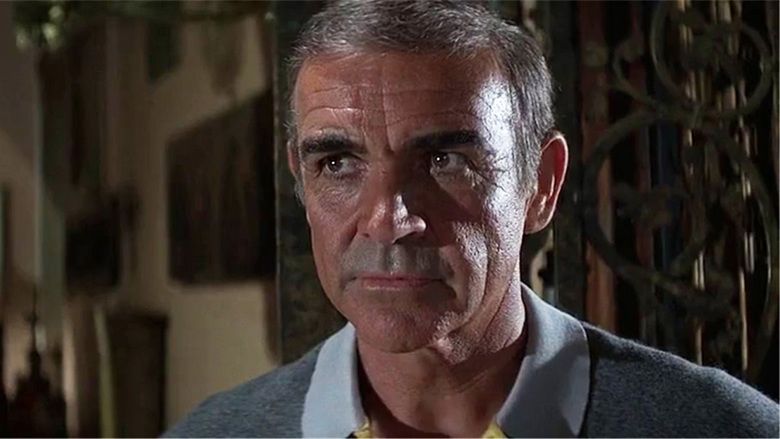
Bond and Leiter attempt to board Largo's motor yacht, the Flying Saucer, in search of the missing nuclear warheads. Bond finds Domino. He attempts to make Largo jealous by kissing Domino in front of a two way mirror. Largo becomes enraged, traps Bond and takes him and Domino to Palmyra, Largo's base of operations in North Africa. Largo coldly punishes Domino for her betrayal by selling her to some passing Arabs. Bond subsequently escapes and rescues her.
Domino and Bond reunite with Leiter on a United States Navy submarine and track Largo to a location known as the Tears of Allah, below a desert oasis on the Ethiopian Coast. Bond and Leiter infiltrate the underground facility and a gun battle erupts between Leiter's team and Largo's men in the temple. In the confusion Largo makes a getaway with one of the warheads. Bond catches and fights Largo underwater. Just as Largo tries to detonate the last bomb, he is killed by Domino, taking revenge for her brother's death. Bond returns to the Bahamas with Domino.
Cast
Production
Never Say Never Again had its origins in the early 1960s, following the controversy over the 1961 Thunderball novel. Fleming had worked with independent producer Kevin McClory and scriptwriter Jack Whittingham on a script for a potential Bond film, to be called Longitude 78 West, which was subsequently abandoned because of the costs involved. Fleming, "always reluctant to let a good idea lie idle", turned this into the novel Thunderball, for which he did not credit either McClory or Whittingham; McClory then took Fleming to the High Court in London for breach of copyright and the matter was settled in 1963. After Eon Productions started producing the Bond films, it subsequently made a deal with McClory, who would produce Thunderball, and then not make any further version of the novel for a period of ten years following the release of the Eon-produced version in 1965.
In the mid-1970s McClory again started working on a project to bring a Thunderball adaptation to production and, with the working title Warhead, he brought writer Len Deighton together with Sean Connery to work on a script. The script ran into difficulties after accusations from Eon Productions that the project had gone beyond copyright restrictions, which confined McClory to a film based on the Thunderball novel only, and once again the project was deferred.
Towards the end of the 1970s developments were reported on the project under the name James Bond of the Secret Service, but when producer Jack Schwartzman became involved and cleared a number of the legal issues that still surrounded the project he brought on board scriptwriter Lorenzo Semple, Jr. to work on the screenplay. Connery was unhappy with some aspects of the work and asked Tom Mankiewicz, who had rewritten Diamonds Are Forever, to work on the script; however, Mankiewicz declined as he felt he was under a moral obligation to Cubby Broccoli. Connery then hired British television writers Dick Clement and Ian La Frenais to undertake re-writes, although they went uncredited for their efforts because of a restriction by the Writers Guild of America.
The film underwent one final change in title: after Connery had finished filming Diamonds Are Forever he had pledged that he would "never" play Bond again. Connery's wife, Micheline, suggested the title Never Say Never Again, referring to her husband's vow and the producers acknowledged her contribution by listing on the end credits "Title "Never Say Never Again" by: Micheline Connery". A final attempt by Fleming's trustees to block the film was made in the High Court in London in the spring of 1983, but this was thrown out by the court and Never Say Never Again was permitted to proceed.
Cast and crew
When producer Kevin McClory had first planned the film in 1964 he held initial talks with Richard Burton for the part of Bond, although the project came to nothing because of the legal issues involved. When the Warhead project was launched in the late 1970s, a number of actors were mentioned in the trade press, including Orson Welles for the part of Blofeld, Trevor Howard to play M and Richard Attenborough as director.
In 1978 the working title James Bond of the Secret Service was being used and Connery was in the frame once again, potentially going head-to-head with the next Eon Bond film, Moonraker. By 1980, with legal issues again causing the project to founder, Connery thought himself unlikely to play the role, as he stated in an interview in the Sunday Express: "when I first worked on the script with Len I had no thought of actually being in the film". When producer Jack Schwartzman became involved, he asked Connery to play Bond; Connery agreed, asking (and getting) a fee of $3 million, ($7 million in 2016 dollars) a percentage of the profits, as well as casting and script approval. Subsequent to Connery reprising the role, the script has several references to Bond's advancing years – playing on Connery being 52 at the time of filming – and academic Jeremy Black has pointed out that there are other aspects of age and disillusionment in the film, such as the Shrubland's porter referring to Bond's car ("They don't make them like that anymore."), the new M having no use for the 00 section and Q with his reduced budgets.
For the main villain in the film, Maximillian Largo, Connery suggested Klaus Maria Brandauer, the lead of the 1981 Academy Award-winning Hungarian film Mephisto. Through the same route came Max von Sydow as Ernst Stavro Blofeld, although he still retained his Eon-originated white cat in the film. For the femme fatale, director Irvin Kershner selected former model and Playboy cover girl Barbara Carrera to play Fatima Blush – the name coming from one of the early scripts of Thunderball. Carrera's performance as Fatima Blush earned her a Golden Globe Award nomination for Best Supporting Actress, which she lost to Cher for her role in Silkwood. Micheline Connery, Sean's wife, had met up-and-coming actress Kim Basinger at a hotel in London and suggested her to Connery, which he agreed upon. For the role of Felix Leiter, Connery spoke with Bernie Casey, saying that as the Leiter role was never remembered by audiences, using a black Leiter might make him more memorable. Others cast included comedian Rowan Atkinson, who would later parody Bond in his role of Johnny English.
Former Eon Productions' editor and director of On Her Majesty's Secret Service, Peter R. Hunt, was approached to direct the film but declined due to his previous work with Eon. Irvin Kershner, who had achieved success in 1980 with The Empire Strikes Back was then hired. A number of the crew from the 1981 film Raiders of the Lost Ark were also appointed, including first assistant director David Tomblin, director of photography Douglas Slocombe and production designers Philip Harrison and Stephen Grimes.
Filming
Filming for Never Say Never Again began on 27 September 1982 on the French Riviera for two months before moving to Nassau, the Bahamas in mid-November where filming took place at Clifton Pier, which was also one of the locations used in Thunderball. The Spanish city of Almería was also used as a location. Largo's Palmyran fortress was actually historic Fort Carré in Antibes. Largo's ship, the Flying Saucer, was portrayed by the yacht Kingdom 5KR, then owned by Saudi billionaire Adnan Khashoggi and called the Nabila. Principal photography finished at Elstree Studios where interior shots were filmed. Elstree also housed the Tears of Allah underwater cavern, which took three months to construct. Most of the filming was completed in the spring of 1983, although there was some additional shooting during the summer of 1983.
Production on the film was troubled, with Connery taking on many of the production duties with assistant director David Tomblin. Director Irvin Kershner was critical of producer Jack Schwartzman, saying that whilst he was a good businessman, "he didn't have the experience of a film producer". After the production ran out of money, Schwartzman had to fund further production out of his own pocket and later admitted he had underestimated the amount the film would cost to make.
Steven Seagal, who was the fight choreographer for this film, broke Connery's wrist while training. On an episode of The Tonight Show with Jay Leno, Connery revealed he did not know his wrist was broken until over a decade later.
Many of the elements of the Eon-produced Bond films were not present in Never Say Never Again for legal reasons. These included the gun barrel sequence, where a screen full of 007 symbols appeared instead, and similarly there was no "James Bond Theme" to use, although no effort was made to supply another tune. A pre-credits sequence was filmed but not used; instead the film opens with the credits run over the top of the opening sequence of Bond on a training mission.
Music
The music for Never Say Never Again was written by Michel Legrand, who composed a score similar to his work as a jazz pianist. The score has been criticised as "anachronistic and misjudged", "bizarrely intermittent" and "the most disappointing feature of the film". Legrand also wrote the main theme "Never Say Never Again", which featured lyrics by Alan and Marilyn Bergman—who had also worked with Legrand in the Academy Award winning song, "The Windmills of Your Mind"—and was performed by Lani Hall after Bonnie Tyler, who disliked the song, had reluctantly declined.
Phyllis Hyman also recorded a potential theme song, written by Stephen Forsyth and Jim Ryan, but the song—an unsolicited submission—was passed over given Legrand's contractual obligations with the music.
Release and reception
Never Say Never Again premiered in New York on 7 October 1983, grossing $9.72 million ($23 million in 2016 dollars) on its first weekend, which was reported to be "the best opening record of any James Bond film" up to that point and surpassing Octopussy's $8.9 million ($21 million in 2016 dollars) from June that year. The film went on general release in the US in 1,500 cinemas on 14 October 1983 and had its UK premiere at the Warner West End cinema in Leicester Square on 14 December 1983. Worldwide, Never Say Never Again grossed $160 million in box office returns, which was a solid return on the budget of $36 million.
Warner Bros. released Never Say Never Again on VHS and Betamax in 1984, and on laserdisc in 1995. After Metro-Goldwyn-Mayer purchased the distribution rights in 1997 (see Legacy, below), the company has released the film on both VHS and DVD in 2001, and on Blu-ray in 2009.
Contemporary reviews
Never Say Never Again was broadly welcomed and praised by the critics: Ian Christie, writing in the Daily Express, said that Never Say Never Again was "one of the better Bonds", finding the film "superbly witty and entertaining, ... the dialogue is crisp and the fight scenes imaginative." Christie also thought that "Connery has lost none of his charm and, if anything, is more appealing than ever as the stylish resolute hero." David Robinson, writing in The Times also concentrated on Connery, saying that: "Connery ... is back, looking hardly a day older or thicker, and still outclassing every other exponent of the role, in the goodnatured throwaway with which he parries all the sex and violence on the way". For Robinson, the presence of Connery and Klaus Maria Brandauer as Maximillian Largo "very nearly make it all worthwhile." The reviewer for Time Out summed up Never Say Never Again saying "The action's good, the photography excellent, the sets decent; but the real clincher is the fact that Bond is once more played by a man with the right stuff."
Derek Malcolm in The Guardian showed himself to be a fan of Connery's Bond, saying the film contains "the best Bond in the business", but nevertheless did not find Never Say Never Again any more enjoyable than the recently released Octopussy (starring Roger Moore), or "that either of them came very near to matching Dr. No or From Russia with Love." Malcolm's main issue with the film was that he had a "feeling that a constant struggle was going on between a desire to make a huge box-office success and the effort to make character as important as stunts." Malcolm summed up that "the mix remains obstinately the same-up to scratch but not surpassing it." Writing in The Observer, Philip French noted that "this curiously muted film ends up making no contribution of its own and inviting damaging comparisons with the original, hyper-confident Thunderball". French concluded that "like an hour-glass full of damp sand, the picture moves with increasing slowness as it approaches a confused climax in the Persian Gulf."
Writing for Newsweek, critic Jack Kroll thought the early part of the film was handled "with wit and style", although he went on to say that the director was "hamstrung by Lorenzo Semple's script". Richard Schickel, writing in Time magazine praised the film and its cast. He wrote that Klaus Maria Brandauer's character was "played with silky, neurotic charm", whilst Barbara Carrera, playing Fatima Blush, "deftly parodies all the fatal femmes who have slithered through Bond's career". Schickel's highest praise was saved for the return of Connery, observing "it is good to see Connery's grave stylishness in this role again. It makes Bond's cynicism and opportunism seem the product of genuine worldliness (and world weariness) as opposed to Roger Moore's mere twirpishness."
Janet Maslin, writing in The New York Times, was broadly praising of the film, saying she thought that Never Say Never Again "has noticeably more humor and character than the Bond films usually provide. It has a marvelous villain in Largo." Maslin also thought highly of Connery in the role, observing that "in Never Say Never Again, the formula is broadened to accommodate an older, seasoned man of much greater stature, and Mr. Connery expertly fills the bill." Writing in The Washington Post, Gary Arnold was ample in his praise, saying that Never Say Never Again is "one of the best James Bond adventure thrillers ever made", going on to say that "this picture is likely to remain a cherished, savory example of commercial filmmaking at its most astute and accomplished." Arnold went further, saying that "Never Say Never Again is the best acted Bond picture ever made, because it clearly surpasses any predecessors in the area of inventive and clever character delineation".
The critic for The Globe and Mail, Jay Scott, also praised the film, saying that Never Say Never Again "may be the only instalment of the long-running series that has been helmed by a first-rate director". According to Scott, the director, with high-quality support cast, resulted in the "classiest of all the Bonds". Roger Ebert gave the film 3½ out of 4 stars, and wrote that Never Say Never Again, while consisting of a basic "Bond plot", was different from other Bond films: "For one thing, there's more of a human element in the movie, and it comes from Klaus Maria Brandauer, as Largo." Ebert went on to add, "there was never a Beatles reunion ... but here, by God, is Sean Connery as Sir James Bond. Good work, 007."
Reflective reviews
Because Never Say Never Again is not an Eon-produced film, it has not been included in a number of subsequent reviews. Norman Wilner of MSN said that 1967's Casino Royale and Never Say Never Again "exist outside the 'official' continuity, [and] are excluded from this list, just as they're absent from MGM's megabox. But take my word for it; they're both pretty awful". Of the more recent reviews, opinion on Never Say Never Again is still mixed: film review aggregator Rotten Tomatoes lists the film with a 63% rating from 46 reviews. The score is still more positive than some of the Eon films, with Rotten Tomatoes ranking Never Say Never Again 16th among all Bond films in 2008. Empire gives the film three of a possible five stars, observing that "Connery was perhaps wise to call it quits the first time round". IGN gave Never Say Never Again a score of 5 out of 10, claiming that the film "is more miss than hit". The review also thought that the film was "marred with too many clunky exposition scenes and not enough moments of Bond being Bond".
In 1995 Michael Sauter of Entertainment Weekly rated Never Say Never Again as the ninth best Bond film to that point, after 17 films had been released. Sauter thought the film "is successful only as a portrait of an over-the-hill superhero." He did admit, however, that "even past his prime, Connery proves that nobody does it better". James Berardinelli, in his review of Never Say Never Again, thinks the re-writing of the Thunderball story has led to a film which has "a hokey, jokey feel, [it] is possibly the worst-written Bond script of all". Berardinelli concludes that "it's a major disappointment that, having lured back the original 007, the film makers couldn't offer him something better than this drawn-out, hackneyed story." Critic Danny Peary wrote that "it was great to see Sean Connery return as James Bond after a dozen years". He also thought the supporting cast was good, saying that Klaus Maria Brandauer's Largo was "neurotic, vulnerable ... one of the most complex of Bond's foes" and that Barbara Carrera and Kim Basinger "make lasting impressions." Peary also wrote that the "film is exotic, well acted, and stylishly directed ... It would be one of the best Bond films if the finale weren't disappointing. When will filmmakers realize that underwater fight scenes don't work because viewers usually can't tell the hero and villain apart and they know doubles are being used?"
Legacy
In the 1990s, McClory announced plans to make another adaptation of the Thunderball story starring Timothy Dalton entitled Warhead 2000 AD, but the film was eventually scrapped. In 1997 the Sony Corporation acquired some or all of McClory's rights in an undisclosed deal, and subsequently announced that it intended to make a series of Bond films, as the company also held the rights to Casino Royale. This move prompted a round of litigation from MGM, which was settled out-of-court, forcing Sony to give up all claims on Bond; McClory still claimed he would proceed with another Bond film, and continued his case against MGM and Danjaq; On 27 August 2001 the court rejected McClory's suit. McClory died in 2006.
On 4 December 1997, MGM announced that the company had purchased the rights to Never Say Never Again from Schwartzman's company Taliafilm. The company has since handled the release of both the DVD and Blu-ray editions of the film.
References
Never Say Never Again WikipediaNever Say Never Again IMDbNever Say Never Again Rotten TomatoesNever Say Never Again themoviedb.org
